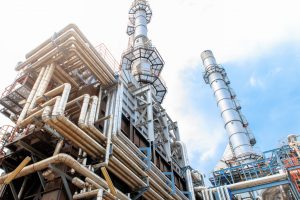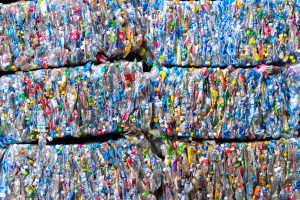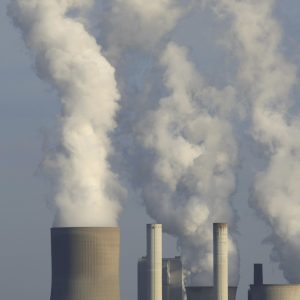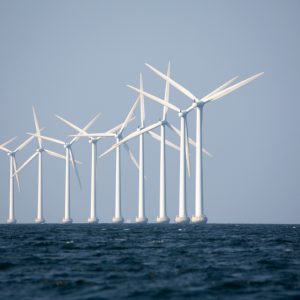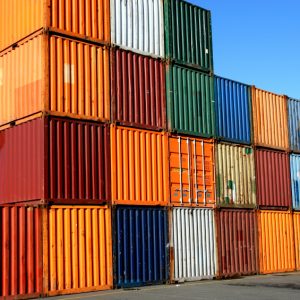Critical review
Proposal
We aim to provide an informed view of the accuracy and comprehensiveness of emissions data and monitoring regimes, across petrochemical sectors. The review will assess emissions and environmental impacts from all stages of the lifecycle of petrochemical products: chemical production, product manufacture, use and end-of-life treatment.
Background
GHG emissions data for the petrochemical manufacturing sector are disparate across petrochemical sectors and world regions, and existing data are frequently impossible to compare. This results from different system boundaries, practices and legal frameworks for reporting emissions data and footprint indicators.
Methodology
The Critical Review is divided into quantitative and qualitative parts:
– we will perform a quantitative review of emissions data from across petrochemical sectors and world regions. All disparate emissions data will be assembled and reported in a single place and subject to the same system boundaries to enable comparison and to remove methodological bias. This assembly will be used to assess the data coverage and uncertainty of emissions monitoring schemes. across different chemical products and between regions and will be extended to understand other environmental impacts such as plastic waste, eutrophication, non-GHG emissions.
– we will also undertake a qualitative review of monitoring standards and disclosure requirements to give an informed view on the accuracy and comprehensiveness of compliance and auditing requirements.
– uncertainty, across both parts, will be characterised across four dimensions: unreliable data from systematic bias (e.g. certain categories are not reported, or misreported); lack of knowledge about operations (e.g. plant characteristics, scale of production, end-of-life choices); changes over time (e.g. data becomes out of date in rapidly growing regions); inherent variability due to regional and process disaggregation.
Data modelling and uncertainty
Proposal
We will develop an open and comprehensive integrating model of global resource flows, emissions and technologies in the petrochemicals sector. This will combine information, data and learnings from the other workstreams in an open repository, creating transparency and a process for accepting contributions to update or improve the dataset. We will include uncertainty explicitly using an iterative Bayesian framework (developed by Lupton) allowing characterization of potentially large uncertainties in areas where data is scarce. By allowing large uncertainties in some parts of the model, initial data gaps need not hold up the overall process. Initial estimates can be made conservatively, with high uncertainty, allowing the model to prioritize areas where further data is most needed to better inform the relevant decisions and insights.
Background
We need a transparent account of the whole life-cycle emissions and environmental impacts associated with plastics and petrochemicals. As emissions (and mitigation options) occur across the life-cycle, modelling must integrate data from upstream refinement, through manufacturing and use, to end-of-life treatment/recycling. Providing this data in a transparent and accessible way enables broader use by a range of researchers, activists and leaders in policy and industry. There is high uncertainty about some aspects of this system, but due to the limited data availability this is often not quantified statistically. Some data gaps and uncertainties are more important than others, depending on the question at hand. Properly capturing uncertainties allows decision making to proceed, even with imperfect data, and a better understanding of the effect of uncertainty on decisions.
Methodology
We will develop a systems model structure capturing material and energy flows, stocks in use, emissions and environmental impacts. As different workstreams use different types of models, appropriate to different parts of the life-cycle, the integrative model will abstract a common structure. The mathematical structure combines the flow and emissions modelling of Life Cycle Analysis with the dynamic stock modelling of Material Flow Analysis. We will:
– Establish an integration process to bring results from across C-THRU to calibrate the integrative model structure, and feedback to other workstreams on data improvement priorities and potential inconsistencies.
– output results from the model in a consistent format (i.e. dynamic Sankey diagrams of mass, energy and emission, using the FloWeaver tool developed by Lupton) for further analysis and data visualization, acting as a toolkit for others to extract relevant evidence from the model.
– assess and characterize data uncertainties and propagate these through the model using Monte Carlo simulations in a Bayesian framework, as previously developed by Lupton (Co-I) for material and energy flows.
– present uncertain results in the context of particular decisions or questions and use sensitivity analysis to explore the areas of the model most in need of improved characterization of uncertainty or improved data quality, driving an iterative improvement cycle.
Process energy and GHG emissions
Proposal
In the following tasks we will disaggregate Cullen‘s energy use and emissions data into more detailed industry subsectors, products and processes for incorporation across C-THRU and use this technology richness to further explore different levers for dramatically decarbonizing future chemicals production:
Baseline process energy and emissions analysis: We will
– construct and validate archetypal process engineering models for major chemical subsectors (in coordination with Allen);
– compile industry data to quantify (in coordination with Chris and Penny Hamlin) production quantities, plant capacities, plant vintages, feedstock types, typical technologies, and (in coordination with King) trade flows at the regional and global levels;
– develop a computational optimization framework to combine bottom-up process engineering models, industry data, and top-down energy/emissions statistics from Cullen to generate subsector-, product-, and process-level energy and emissions (both GHGs and non-GHG) intensities for use in across the work of C-THRU, inclusive of chemical reaction emissions derived from stoichiometric approaches;
– use modeling data to construct dynamic Sankey diagrams to illustrate energy and emissions flows associated with mass flows with Lupton.
Decarbonization scenario analysis: We will
– compile and derive technology performance and economic data for promising low-carbon process technologies (i.e. electrification technologies, advanced energy-efficient processes, biomass and hydrogen feedstocks, solar thermal heating, and CCSU);
– integrate baseline process archetype models and process technology options into a plant-level simulation framework;
– use the simulation framework to identify viable decarbonization pathways, quantifying the energy, resource input, and GHG and non-GHG emissions implications of each scenario at the global and regional levels. We will interpret these results in light of the wider modelling literature on climate change impacts.
Background
Product emissions arising from chemical plants are functions of the fuels and feedstocks used, unit process yields, emissions arising from chemical reactions, and energy efficiencies at both the unit process and production system levels. These factors can often be captured by process engineering models, which, in turn, can be used to fill important chemical industry energy and emissions data gaps in two important ways.
First, they can be used to disaggregate sector-level energy and emissions totals (e.g. for all of petrochemicals) into unreported subsectors (e.g. aromatics) in a rigorous way, in combination with published industry data, such as production quantities and typical process technologies. Subsector estimates (e.g. aromatics) can then be mapped to specific products (e.g. polystyrene) on the basis of mass inputs for life-cycle energy and emissions accounting purposes. Second, given their technology richness, they can be used to explore various technology levers for decarbonizing chemicals production. Both applications are fully replicable by the research community, extendable to new regions with sufficient data, and have been proven successful in previous chemical industry energy and emissions accounting and decarbonization studies conducted by our research team.
Methodology
For each major chemical subsector within the scope of the project, a set of archetypal process engineering models will be developed by constructing unit process mass and energy balances, typical unit process sequences, and typical process conversion and energy efficiencies by feedstock. This will use a generalized process system modelling approach based on thermodynamic analysis of standard unit processes (e.g. separations, compression, heating) and reactions, as well as published process engineering models and descriptions, including related work by the C-THRU research team.
The decarbonization scenario analysis will use the TIMES platform, which are developed by and shared among a global community of energy analysts and will enable the project to contribute directly to the broader climate community and leverage data developed by other TIMES research groups.
To populate the model, a comprehensive dataset of low-carbon technology options will be generated, inclusive of mass and energy balances, technology readiness levels and economic data. Options will include process electrification (e.g. mechanical separations, heat pumps, and microwave-enhanced catalysis), bio-based feedstock processing, hydrogen feedstock pathways (e.g. renewable electricity with electrolysis, methane pyrolysis), advanced energy efficiency practices (e.g. process intensification), use of recycled feedstocks (in coordination with Allen), solar process heating, and carbon capture, sequestration, and utilization. These data will be based on a comprehensive review of process innovations from the scientific literature, technology roadmaps, and pilot and start-up plants.
Demand for chemical products
Proposal
We will map the global flows of chemicals from production to end-use applications. This map will be used to build a dynamic model of product stocks, to test the impact of alternative interventions along the chemicals supply chain in future demand, waste generation and global lifecycle emissions, and will provide mass flow information from production to use for the overall model in Lupton‘s work.
Background
Demand for chemical products is driven by a combination of various factors: population and economic growth, changes in the materials chosen for each given application, and the replacement of discarded products containing chemicals. Anticipating future demand for chemical products and waste generation is essential to estimate emissions across chemicals’ lifecycles and over time. Dynamic material flows analyses have been used to model stocks of bulk materials and some classes of products in service, future demand and waste generation. Static assessments of production and use of global chemical products already exist in the literature, but there is currently no link between the production of chemicals and their end-use applications. A few dynamic assessments have been attempted for some plastics, but there are neither dynamic insights on the pace of replacement of all chemical products, nor tools to test the impact of alternative interventions along supply chains.
Methodology
The existing global map of chemical products will be linked with end-use applications, using allocation matrices from publicly available data for specific countries. Using global and regional production and output values, historical maps of chemical products will be created and used as the basis for a dynamic model. Such a model will be developed from basic principles of conservation of mass, which enable the estimation of the demand in year for each chemical product as that required to supply total demand in service, accounting for the chemical products removed from service along with discarded waste.
Chemical products removed from service will be estimated using probability distribution functions for the lifetime of end-use products. Weibull distributions are often used for this purpose, and discarded waste can be computed for each year and product application using the following equation for each cohort of products with age, where the shape and scale parameters of the Weibull distribution can be estimated from historical data and literature for each product category:
Recycling and end-of-life options
Proposal
The transformation from light to heavy feedstocks in chemical manufacturing opens up opportunities for enhanced circular polymer processing and the integration of waste plastic de-polymerization chemical manufacturing. We will explore these possibilities using a model of US chemical manufacturing industry, as an interconnected network of approximately 1000 chemical processes that convert a small number of primary raw materials into hundreds of intermediate and final products.
Background
Primary feedstocks to the chemical manufacturing industry include ethane, propane, butanes, and pentanes (known as C2−C5 alkanes or natural gas liquids, NGLs). These are converted to more reactive olefins and then to commodity chemicals, including plastics. NGLs are sourced from by-products of natural gas processing (called natural gas plant liquids, NGPLs) or from petroleum crude processing (called paraffinic liquefied refinery gases, LRGs). Petroleum processing has traditionally been a prominent source of C2−C5 alkanes. However, recent advancements in horizontal drilling and hydraulic fracturing in tight oil and shale formations have increased the availability of wet natural gas (NG) and NGPLs in the United States. The US chemical industry is adapting to increased availability of low-cost natural gas and NGLs, and since 2009, NGL based feedstocks have increased dramatically, and the use of heavy liquids (such as naphtha from petroleum processing) has decreased at a similar rate.
Methodology
The model tracks materials used as input, products, fuel use, electricity use, and water use for every process. Our team has populated the model with current industry data and geospatial information concerning plant locations and capacities, and feedstock availability, to form a spatially resolved network of material flows, energy use and water use, with approximately 1000 chemical processes represented, data from which will also be used for processing engineering model calibration and validation in Masanet and Christopher‘s work. In this work we probe circular economy supply chain concepts for plastics in two steps:
– we will introduce into the network of US chemical manufacturing systems, a series of de-polymerization technologies, which convert waste polymers into commodity compounds such as benzene, styrene or other compounds. We will identify the price points at which de-polymerization reactions will be competitive in the evolving chemical manufacturing system.
– we will utilize the spatially resolved network modeling, that our team has recently initiated, to identify locations where de-polymerization pathways are most advantaged, because of waste polymer availability; high values for the de-polymerized products; large transport distances between monomer production and polymer production. The mapping in Figure 2 shows locations of chemical manufacturing facilities in the United States and some regions stand out as having significant polymer production relatively distant from the bulk of monomer production located in the Gulf Coast. Insights on the networks and conditions that lead to optimal recycling quantities in the United States will be generalized for application to other regions in Lupton’s model, enabling assessment of how improved recycling rates can lead to life-cycle benefits globally.
Economic context
Proposal
We will a high-level macroeconomic model of how the plastics supply chain, including recycling and capturing of GHG emissions (e.g. from industrial facilities) integrates within a large economy. The purpose is to model the dynamics and feedbacks of carbon mitigation efforts, including petrochemical production and recycling to explore feedbacks from a circular economy. Information from others areas of C-THRU’s work will be applied in a macroeconomic model for the United States and serve as a template for other economic regions. This US model will be informative as the U.S. economy is large and complex, with few imports of energy and petrochemical feedstocks.
Background
Robust discussion of plastics recycling has occurred for nearly 50 years, yet only about 10% of plastics are recycled. Most analyses compare the cost of recycled plastics to those from virgin material, but outside of the contextual pressures of country or global scale economic growth, which has thus far occurred without plastics recycling. This work focuses on the Economic Context and integrating data and sub-models from areas across C-THRU into a macroeconomic context, which is explored by building a systems-based dynamic macroeconomic model to understand the impact of a circular economy for plastics. Robust discussion of plastics recycling has occurred for nearly 50 years, yet only about 10% of plastics are recycled. Most analyses compare the cost of recycled plastics to those from virgin material, but outside of the contextual pressures of country or global scale economic growth, which has thus far occurred without plastics recycling.
Methodology
Our macroeconomic model takes a systems approach to address the root causes of climate change (and lack of plastics recycling) by explicitly linking the physical nature of the economy to its monetary interpretations. Our approach is similar to system dynamics approaches, such as in The Limits to Growth studies, but with an important additional feature: the tracking of money to better enable policy-relevant conversations about the interplay of economic growth, debt, and wages (or income). King has demonstrated this framework via his HARMONEY (Human and Resources with MONEY) model that links physical system modelling with full stock-flow consistent economic accounting as used in post-Keynesian approaches. This approach ensures consistent accounting of conservation of flows for mass (natural resources and goods) and money. This ‘heterodox’ economic approach to studying the physical nature of the economy, and its emissions, is required because orthodox economic models ignore the dynamics, debt, and physical basis of the economy, and are incapable of interpreting the physical and debt-based constraints and feedbacks that pervade modern economies.
Business landscape
Proposal
We will analyze the business ramifications of future changes to petrochemical supply chains and fully modeled in the scenario analysis by Lupton. These possible future interventions will have profound impacts on stakeholders from all across the life-cycle stages of chemical products. This analysis of the business landscape will work closely with King, to understand the economic context, and add a layer of confidence to the decision-making process for business.
A primary objective will be the creation of a comprehensive model of commercial activity in oil and gas production, petrochemicals and plastics manufacturing to provide insight into the system-wide impact of specific changes. This will include:
– developing a baseline understanding of the current business landscape and the interactions between companies, sites and production facilities.
– reviewing how firms have reacted historically to emissions and sustainability related pressures, to inform future business strategy and provide a view of the overall future shape of the industry.
– building from the mitigation analyses from work across C-THRU to explore the influence of current businesses in the petrochemicals industry on overall GHG emissions, and how this varies by company type.
– developing an understanding of the global business strategy, including how supply-side actors will respond to future reductions in demand for transport fuels, and feeding this insight into the integrated model and the future scenarios.
Background
We will address the system-wide response of petrochemical sub-sectors to specific actions and interventions, and the consequential GHG emissions impact. In addition, it will provide broad contextual and experience-based insight to the overall program, leveraging decades of experience and specific knowledge of manufacturing process and value chain modelling methodologies. In particular, we will ensure that the industries under consideration are understood as a complex co-evolutionary ecosystem, connected not just through material flows, but also by the interaction of multi-dimensional organizational structures including geography, ownership, value chain and socio-political dimensions.
Methodology
We will utilize a mix of quantitative and qualitative evaluation and interpretation approaches, combining our novel network mapping methodology based in complex systems thinking (in collaboration with other workstreams), with our deep expertise gained from working in and around the focus industries for many years to generate evidence-based and experience-informed conclusions. Narrative enquiry methods, leveraging the leaders’ extensive network of professional contacts, will be employed to evaluate the likely response of businesses to specific interventions and actions—especially around capital allocation, locations and ownership of production assets—and the consequent implication of GHG mitigation initiatives and regulatory influence. Learning from this activity and existing relationships with industry stakeholders will also be used to: build deeper knowledge-exchange networks across industrial, governance, policy and advocacy stakeholders; assist the program to identify and access data, especially from Asia and Europe; support the information dissemination strategy for the whole program by developing connections with industry media outlets.
